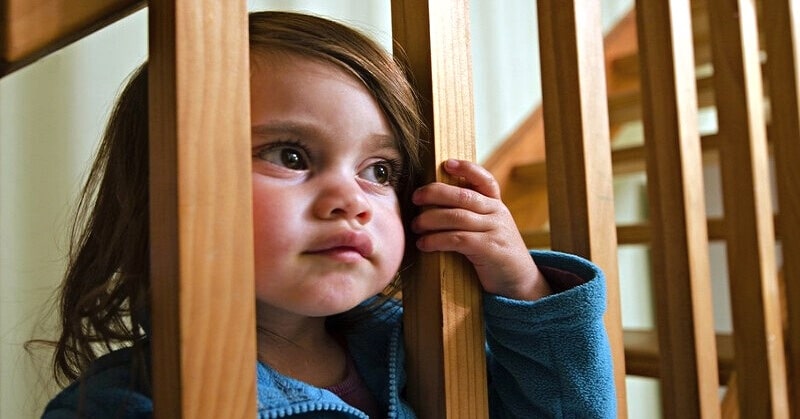We all play roles in our individual family dynamics.
In healthy families, these roles all balance one another quite well. Everyone’s role is important, and although there may be some overlap between them at times (as well as inevitable interpersonal conflicts), the family unit functions like a fairly well-organized machine.
Dysfunctional family dynamics are quite a different story.
There are still family roles, of course, but they’re all clashing cogs in a shuddering, jolting machine. Instead of balancing one another, they cause discord and upset.
Furthermore, they might enable or be codependent with one another, which makes that machine break down even more.
If you’ve grown up in, or are currently involved in a dysfunctional family, some of the roles described below may seem familiar to you.
Speak to an accredited and experienced therapist to help you cope with your role and life amongst a dysfunctional family. You may want to try speaking to one via BetterHelp.com for quality care at its most convenient.
1. The narcissist (or borderline).
This is one of the most common roles in dysfunctional families. In fact, dysfunction often centers around the narcissist who’s at the hub of it all.
In healthy families, parents are fairly emotionally stable and can provide their spouses and children with emotional support and encouragement. In contrast, a narcissist sees their partner and children as fuel for their personal fire. Their children aren’t individuals, but rather extensions of themselves to use or neglect as they see fit. Their partner exists to fulfill their needs, but should make themselves scarce once those needs have been sorted out.
These behaviors can also center around a parent with borderline personality disorder (BPD), although it should be made clear that narcissistic personality disorder (NPD) and BPD are two very different diagnoses, but they can cause similar issues in a family context (just for different reasons). They might have created what they envisioned would be the family of their dreams to make up for the one they never had, but then they can’t handle people not behaving the way they want.
Much like the narcissist parent, a BPD parent is terrified of abandonment and rejection, so they manipulate those around them to ensure that their own needs are met, even if it means damaging the others in the process. They might keep their partner or children financially dependent on them, or try to manipulate them into behaving a certain way through guilt.
For example, a narcissist or BPD parent who doesn’t want to be left alone on a weekend might fake an illness or injury to keep a teenaged—or even adult—child at home with them. If the child protests, the parent might say that if they get even sicker or die while the child is out having fun, then the death will be on their conscience. Since they know the child doesn’t want to carry that emotional burden, they’ll cave and stay home.
All the other family members are supportive cast members in their drama, and they don’t seem to be aware of (or care about) how their actions influence others in the long run.
2. The addict.
Sometimes, a dysfunctional family revolves around the addict at the center. Alternatively, there may be a dynamic in which there are both an addict and a narcissist involved. Quite often, a spouse or child of a narcissist will develop an addiction (such as alcohol dependency) to deal with the narcissist’s behavior. This exacerbates the dysfunction and weaves rather intricate, unhealthy webs for everyone involved.
Addiction can come in many forms, and it’s generally a parent or older child who ends up in this kind of role. The addiction might revolve around alcohol or drugs, but could also involve gambling, gaming, or other pastimes that take focus and attention away from their family responsibilities.
It’s important to note here that their addiction is almost always a form of escapism from a family situation or a life obligation that makes them deeply unhappy or stressed out. Unhealthy family dynamics tend to happen in cycles, so the addict might have been raised by a narcissist, who was in turn raised by an addict, and so on for generations back.
One of the reasons why these cycles continue is that people are often drawn to the familiar. For example, a person who was raised by a narcissist will often date people with narcissistic tendencies. They’re comfortable with narcissistic behavior, and they find themselves dealing with the same situations over and over again, often with the hope that this time, things will turn out differently. This time, they’ll be loved and appreciated the way they’ve always wanted to be, always deserved.
So this person turns to intoxicants or distractions as a coping mechanism to deal with the situation they’ve either been born into, or chosen on a subconscious level. Then they’ll create and/or exacerbate the drama around them because of their addictive behaviors.
They might feel a great amount of self-loathing and feel that they’re unlovable, so they immerse themselves in the aforementioned to soothe themselves. But then the feedback they get from their family (e.g., contempt, anger, disappointment, etc.) reinforces their negative ideas about themselves. Which then pushes them further into addiction.
Meanwhile, everyone around them has to compensate for their behavior. If the addict is a parent, then their children will grow up far too quickly simply because they must. Food needs to be prepared, clothes need to be washed, and bills need to be paid so the power doesn’t get turned off. Then the addict feels immense shame about all of this and sinks further into their addiction… and so the cycle continues.
3. The co-dependent (aka the enabler).
This is most often the spouse or partner to the addict or narcissist, but can also be an adult child. For example, if the narcissist is a grandparent living in an extended family unit, then the co-dependent or enabler might be one of their offspring.
They’ll have a very co-dependent relationship with the main abuser, and will both fuel their unhealthy lifestyle habits and feel fueled by them.
As an example, let’s say that the abuser weighs over 400 pounds and has difficulty moving around by themselves. The enabler will keep making food for them despite knowing about the devastating long-term ramifications it’ll cause to the abuser’s health.
Or the abuser is an alcoholic who causes the entire family all manner of grief, but the enabler still buys them alcohol in an attempt to “keep them happy.” Especially if the alcoholic can’t work because of their addiction and thus is dependent upon them for their continued supply.
The enabler might be on the receiving end of all manner of verbal and even physical abuse, but they feel strong and validated in their position in the home because the abuser literally cannot live without them.
Hence the codependency. The abuser needs the enabler in order to survive, and the enabler needs a life purpose.
The enabler will generally do all they can to stay in the abuser’s good books as well. This means taking their side if and when they’re awful to the enabler’s own children, rather than defending them. They’ll betray the trust of those closest to them in order to maintain their position (and possibly avoid drawing ire in their own direction), then play the victim when and if their kids call them out on their behavior later.
4. The caretaker.
The caretaker role is very similar to the enabler, and some may say that they’re even interchangeable. Generally, however, the caretaker role is either foisted upon someone so it becomes their baseline standard, or taken on intentionally in an attempt to maintain peace in the house. In the former situation, it’s often a child that is parentified and has to take on a caretaking role.
For example, if their parents have health or mobility issues and can’t take care of the rest of the family properly, then usually the eldest child (or children) are forced to step up. They’re constantly on high alert for anything that could potentially go wrong, and they end up sacrificing their own emotional wellbeing for the sake of caring for others.
They might be hypervigilant about potential hazards and thus have difficulty getting real rest. There’s always so much to do; they don’t know how to relax.
Those who end up with caretaking as their dysfunctional role will martyr themselves for those around them. Their entire existence revolves around trying to make everyone happy in the hope that this will create a healthier, less toxic home environment.
They also seek approval and accolades for their selflessness. If they don’t get these from those they’re serving at home, they might post online about everything they’re doing for their loved ones, or make their devotion known throughout their social circles.
As you may have guessed, this is rarely the case. In fact, things usually get even worse because the caretaker’s own health and emotional wellbeing will deteriorate in their attempts to keep everyone else afloat.
The people who fill this role don’t know what to do with themselves when they’re not caring for others. They need to be needed (like the enabler), and will often push their “help” on others so as to have some kind of life purpose. Some might even go so far as to sabotage another’s health in order to maintain their own purpose (and gain approval from others for their diligent care), such as in cases of Munchausen by proxy.
In other cases, the caretaker will seek out partners and friends who need their care and help on a regular basis. They may be drawn to those with chronic health issues, addiction, or a history of trauma so that they can help. They’re always helping.
You’ll know a caretaker when you see one because they’re literally always doing something. Even if the rest of the family is chilling out and watching a movie, they’ll be folding laundry, mending clothes, meal planning for the week, or getting snacks and drinks for everyone.
Caring for everyone else comes first, at a detriment to their own health: both physical and emotional.
5. The golden child (aka the hero).
Anyone who has done research into childhood abuse and dysfunctional families has come across the term “golden child.” It refers to the child in the family who can basically do no wrong in one or both parents’ eyes.
This child’s entire existence revolves around being perfect so as not to draw anyone’s ire. They focus all their energy on being as attentive and obedient as humanly possible. Whatever it is that the parent (or parents) want of them, they’ll do to the best of their ability—usually damaging themselves in the process.
They might be academic overachievers: straight-A students who make the top of the honor role, are named valedictorian at their graduation, and receive scholarships to college. Or they might be a star athlete with several scholarships to choose from. If physical appearance is a top priority in the family, the golden child might be a model or social media influencer.
One of the reasons why these kids tend to be the “heroes” of their dysfunctional families is because they give others the illusion that their family is healthy and thriving. The parents get to wheel out their honor student or ballerina whenever they like, which of course reflects wonderfully on them. And how could anything possibly be wrong in a family where a child is doing so well and smiling so brightly?!
Most of these “golden children” battle severe anxiety and depression behind their smiling facades. Eating disorders are incredibly common as well, since they involve being able to control something within their own life (since they have no control over their living environment), while also maintaining the appearance of beauty and perfection that their abusers demand.
These young people end up having very little sense of self, as they’ve spent years living in order to make others happy. As a result, they grow up to be people pleasers who have a difficult time establishing—or holding—any kind of personal boundaries. They’re afraid to say “no” to those who mistreat them because of potential harmful repercussions, and as a result, they often stay in unhealthy situations far longer than they should.
They’re terrified of being rejected or abused if they make a mistake or somehow slip from the pedestal of perfection that’s been demanded of them. As such, they’re prone to nervous breakdowns and often struggle with suicidal ideation.
6. The rebel (aka the defender).
This role is the polar opposite of the caretaker or golden child. Instead of pandering to the abuser’s whims and/or being cowed by their mistreatment, they respond in the opposite way: with defiance.
If there are several family members, the rebel will be the most likely to draw the abuser’s ire the most. The identified parent (IP) is the parent or caregiver who is the primary abuser. The identified parent wants to be catered to and obeyed. They want everyone else under their thumb, doing what they want, how they want, whenever they want. And that will never happen with the rebel.
Instead of being pandering and obedient, the rebel refuses to kowtow to the parent’s manipulations. They see right through their crap and won’t have any of it. They’ll stand up to the parent despite ever-increasing punishments for doing so, simply because they won’t allow anyone to push them around.
Furthermore, they tend to protect other more vulnerable family members from the narcissist’s abuse. For example, they might stand up for siblings who are being verbally abused, calling out the narcissist’s terrible behavior. They might even physically place themselves between the abuser and their victim so they can’t physically assault the weaker person.
This will undoubtedly anger and antagonize the narcissist further, and might ramp up abusive behavior exponentially. The rebel will be punished for their defiance, either through having rewards (or even basic necessities) withheld, or through outright violence. In dysfunctional families, rebels tend to be physically abused the most, followed closely by the scapegoat (we’ll talk about the scapegoat in more detail below).
Quite often, the rebel of the family is one of the most physically strong and capable ones, like a son or daughter who’s bigger and more athletic than the other siblings. The abusive parent(s) tend to be less eager to be abusive toward them because they know the rebel can hold their own. As such, they might try to punish them by other means, such as kicking them out, cutting off financial support, or undermining their lives by lying about them to employers, school administrators, and even their own partners.
Rebels may leave home as soon as possible, or they might stick around to continue protecting their more vulnerable family members. If they leave early, they’re often wracked with guilt about having “abandoned” those who need them.
They might find themselves repeating previous situations by adopting “white knight” behavior. This means that they cultivate intimate relationships with vulnerable people whom they feel need “saving.”
Similarly, they might rebel against anything they feel is a constraint toward them, even if it’s for their own benefit and wellbeing. For instance, they might refuse a doctor’s advice about some aspect of their health simply because they don’t like to be told what to do.
Any constraint against their perception of personal autonomy will be met with their version of an emotional wrecking ball.
7. The waif.
In contrast to the rebel or the golden child, the waif becomes the ultimate victim in the family. They’re in constant need of care, protection, even rescuing by the other family members, and they seem helpless in nearly every way.
Instead of using defiance or escapism to deal with the abuse and familial dysfunction around them, they go the opposite route and demand constant reassurance, care, and affection.
Nothing they ever do “wrong” is ever their fault, and they’ll always be close to tears. Crises and drama are their middle names, and there’s always something that they need help with in their lives. If the narcssist is demanding too much attention, the waif will suddenly become ill or injured so attention goes back on them.
These waifs will often be prone to anxiety or panic attacks, need a great deal of medical attention from all manner of professionals, and be far too sickly to do things like chores, cooking, or even go to school/work. They take their victimhood and use it as a weapon to control their environment, and everyone in it.
Like the addict, the waif is the center of family drama and likes it there. As such, they try to re-create this dynamic in various other aspects of their lives.
For example, they might choose relationships in which they get to maintain their helplessness so they’re taken care of the way they want to be. Or they’ll get special dispensation from school or work so they don’t have to adhere to schedules and deadlines the way others do.
When and if they aren’t pandered to, they cause a full-on scene and try to get support from others until they get their way.
There’s sometimes crossover between the waif and the black sheep, or the waif and the addict. They might turn to substance abuse or risky behaviors to gain attention, especially if they end up damaged somehow and can then use their damage as victimhood. A great example of this is Natalie Portman’s character “Mathilda” in the film, Leon: The Professional.
8. The black sheep / scapegoat.
We went into detail about what it means to be the black sheep of the family in another article (On Being The Black Sheep Of The Family: Signs, Effects, Coping Mechanisms), so we’ll just give a brief description of it here.
In a dysfunctional family, the black sheep is generally the one who is blamed for all the family’s difficulties. It might be because they’re different from everyone else around them, or simply because there has to be **someone** to take the blame for the mess, and that’s the one everyone has agreed to hate.
This is the person who may naturally just not fit in, either because of personal interests and leanings, or aesthetics they have no control over. The one dark-haired child in a family of blonds might end up being a scapegoat solely due to looking different from the others. Similarly, a child or extended family member with a physical disability or mental illness might end up with all the family ire heaped upon their shoulders.
Or they might have chosen to be the black sheep because they don’t want anything to do with the dysfunctional dumpster fire they were born into. In fact, there’s often a great deal of crossover between the black sheep and the rebel.
They might intentionally wear clothes or color/style their hair in a manner that’s completely different from their other family members. If they’re unable to physically leave the family environment yet, then they’ll do all they can to distance themselves emotionally.
Alternatively, some scapegoats will go above and beyond to try to fit in when they know they can’t. They’re desperate to be accepted by their family, and overcompensate for their perceived shortcomings.
For instance, a chronically ill child whose parents show contempt for their “weakness” might intentionally pursue the same career as the parent to try to earn their approval. They might take up the same hobbies and interests to find common ground, but then alienate everyone further with their sycophancy.
Being the black sheep of the family is incredibly isolating and damaging. Said black sheep might spend the rest of their lives seeking acceptance and validation, or they might shut down and cut everyone off.
9. The clown.
This role often counterbalances the Black Sheep. More often than not, it’s a sibling who recognizes that their family member is being severely mistreated, and they try to redirect abuse by being silly and mischievous.
It’s rather like distracting a toddler who’s having a tantrum by playing peekaboo or making a toy sing a song to make them laugh. The child forgets their tantrum because their attention is occupied elsewhere, and the tension is diffused.
Only this isn’t a child being dealt with, it’s an abuser (or abusers, if several other family members and close friends are also getting in on the cruelty).
Nothing seems to affect the clown of the family. If a parent is being abusive, they might diffuse or evade the abuse by doing something cheeky like snapping a wet towel or getting up to some ridiculous antics. They don’t get upset or angry, but rather let all the family issues slide off them.
Or so it appears.
Long-term fallout from this kind of behavior often includes the clown’s inability to be serious about difficult topics or situations. They’ve always defaulted to humor—sometimes quite dark humor at that—to diffuse tension. As a result, when faced with a difficult subject or situation that they have to deal with, they turn it into a joke in order to cope with it.
This doesn’t bode well for romantic relationships or parental roles.
They’re big on evasion and misdirection, and that just doesn’t work if they have to face something like a partner’s serious illness or a child’s disability. If the clown can’t make a joke about it or dodge it, then they’ll run away from it.
These clowns are always on high alert. They’re super vigilant about changes in other people’s demeanor, body language, and vocal intonations, and are ready to leap in at a moment’s notice to diffuse any potential tension. As such, their own stress and anxiety levels are often quite high, and it’s not unusual for them to suffer from panic attacks, ulcers, and other stress-related digestive issues.
10. The peacemaker.
“Can’t we all just try to get along?” is the peacemaker’s mantra. They’re quite often a parent or grandparent who’s trying to mitigate the damage being done by the addict or narcissist, and just wants to live in a happy, peaceful environment.
Rather than being confrontational about the dysfunction going on around them, they’ll often be checked out. People could be screaming, crying, and even beating each other all around them, and they’ll be puttering around the kitchen baking lemon squares. They block out and ignore anything that isn’t pleasant, and they are quite happy to exist in the proverbial eye of the storm.
These are the people who will make excuses for abusive behavior and try to brush it off when it happens. As a result, they end up making situations much worse by invalidating victims’ emotions and gaslighting them about their experiences.
“Your dad is going through a rough time right now and didn’t mean anything he said.”
“Oh, you didn’t get hit that hard. I got beaten with a belt at your age, and you don’t even have a mark.”
They’re often in deep denial and retreat into fantasy realms and distractions so as to avoid dealing with the reality of their situation. They’ll focus entirely on things that they find pleasant and will actually get up and walk away if ever confronted about the reality of what they’re contending with.
There’s often a crossover between the peacemaker and the addict, as escapism is an underlying facet of both of these roles. They might also overeat because they use food as comfort, or overspend because buying makes them happy.
Either way, the peacemaker cannot be relied upon nor turned to with any kind of distress. They carry their escapist tendencies into all the other facets of their life, and they may develop dissociative disorders as a means of avoiding any and all negativity from their dysfunctional family dynamics.
11. The lost child.
This role can evolve in a couple of different ways. Generally, this is the family member who’s the most invisible—either by choice, or by circumstance.
If it’s through circumstance, then the role is often taken by a middle child in a large family. The elder siblings can get parentified and the younger ones can be clowns or waifs; whereas, the middle one tends to just… disappear into the landscape.
They don’t get the same amount of attention that the others do, nor do they particularly want it. As such, they make do as best they can while being neglected from all directions.
They might not get enough to eat, and they might outgrow their clothes rather intensely before anyone notices. Similarly, they might have physical issues such as problems with their teeth or eyesight that go untreated, simply because nobody is paying attention to them.
A lost child never demands care loudly, nor are they receiving mistreatment like the others. They’re basically furniture.
This invisibility can also be by choice. A rebel, black sheep, golden child, waif, or clown will inevitably draw the attention of the rest of the family, not to mention others in their extended circles.
The lost child doesn’t want this. They want to be invisible: unseen, not spoken to, barely even acknowledged. Everything about them craves disappearance.
They’re often incredibly introverted, and may be seen as shy or antisocial. Lost children learned a long time ago that exhibiting any kind of weakness would result in unwanted attention and abuse, so they greyed themselves into the background as much as possible.
They might not speak much to anyone, and they certainly don’t show any emotion. In fact, even if they’re being screamed at or beaten, they’ll be completely stoic so as to not give their abusers any egress into their emotions or psyches.
If others try to reach out to help a lost child, they’ll retreat even further. They often feel immense shame about their family life and don’t want to open up to anyone about what they’re going through. Furthermore, they learned that they can’t trust the adults in their lives, so they view any attempt to help with suspicion.
This mistrust and social withdrawal can stay with them into later adolescence and adulthood. They might have difficulty forming relationships with others because of their deep mistrust and inability to open up to anyone emotionally.
Furthermore, they might allow serious health issues to go untreated for a long time because they feel that they won’t be listened to or believed if they sought help anyway.
They inevitably end up suffering from lifelong low self-esteem and tend to self-isolate because that’s where they feel the most comfortable. Relationships with others run the risk of abuse and rejection, so they’d just prefer to stay alone.
12. The manipulator (or mastermind).
Of all the dysfunctional family roles, this one can be the most unnerving.
This role is usually taken on by a child who’s highly intelligent and keenly aware of what’s going on around them. They observe family dynamics, recognize behavioral patterns, and then learn how to manipulate those behaviors to their own advantage.
For example, they’ll learn what triggers their narcissist or peacemaker elder and then antagonize siblings or other family members to create the right environment for those triggers to flourish. At this point, they’ll either step in to save the day, or create enough of a nuisance to get what they want just to quiet them and get them out of the way.
Everything they do is subtle, covert. Rather than being full-on about anything, they simply pull the strings around them to make the others dance. Then they reap the benefits and watch chaos ensue around them.
Sometimes the other family members will become aware of their manipulations, but they don’t know how to get around them. Instead, they try to appease them as best they can because they don’t want to exacerbate the behavior. As a result, the other family members have to dance on eggshells all the time: trying to keep peace so they don’t “set off” the narcissist, the manipulator, or the waif.
These people can grow up to also have narcissistic tendencies, or they might even become sociopathic. They’ve shut down their emotions in order to survive the ugliness around them, and their social abilities center solely around bending others to their will through manipulating their feelings.
They have no qualms about hurting others to get what they want. They may even feel justified in doing so to “make up for” the awful things they experienced when they were younger.
*
As you can imagine, there can be a fair amount of crossover and multitasking when it comes to the dysfunctional family roles mentioned above. Furthermore, we haven’t really had the space to address each of them here as thoroughly as we’d like.
In the near future, we’ll be touching upon each of these roles individually. We’ll be covering how they manifest, how to cope with each role—whether that’s yours or the role of someone you care about—and how to break these dysfunctional cycles so they don’t repeat themselves.
Dysfunctional families are rife with abusive behavior, addiction, lack of boundaries, rampant inequality, and severe communication issues. Simply existing in these kinds of environments is absolutely exhausting, and it’s practically impossible for anyone to thrive in them. They wreak havoc on people’s development as they grow up, and can have serious long-lasting effects on all the relationships around them for generations.
If and when we can address the sources of these issues and identify the roles that people have been forced to step into, then we can work toward untangling the mess and creating healthier paths forward for everyone involved.
Do you need more help and advice about being a part of a dysfunctional family? Do you want to break free from your role and heal? Talking to someone can really help you to handle whatever life throws at you. It’s a great way to get your thoughts and your worries out of your head so you can work through them.
Speak to a therapist about it. Why? Because they are trained to help people in situations like yours. They can help you to better understand your family dynamics and give you ways to handle your dealings with your family.
BetterHelp.com is a website where you can connect with a therapist via phone, video, or instant message.
While you may try to work through this yourself, it may be a bigger issue than self-help can address. And if it is affecting your mental well-being, relationships, or life in general, it is a significant thing that needs to be resolved.
Too many people try to muddle through and do their best to overcome issues that they never really get to grips with. If it’s at all possible in your circumstances, therapy is 100% the best way forward.
Here’s that link again if you’d like to learn more about the service BetterHelp.com provide and the process of getting started.
You’ve already taken the first step just by searching for and reading this article. The worst thing you can do right now is nothing. The best thing is to speak to a therapist. The next best thing is to implement everything you’ve learned in this article by yourself. The choice is yours.
You may also like:
- Family Scapegoating: Signs, Dealing With, And Healing From
- 6 Steps To Take When Cutting Ties With Toxic Family
- Estranged Siblings: Handling Difficult Relationships With Brothers And Sisters
- 21 Signs Your Family Doesn’t Care About You (+ How To Cope)
- 10 Signs Of Toxic Parents (+ 6 Steps To Dealing With Them)
- How To Heal A Difficult Mother-Daughter Relationship











